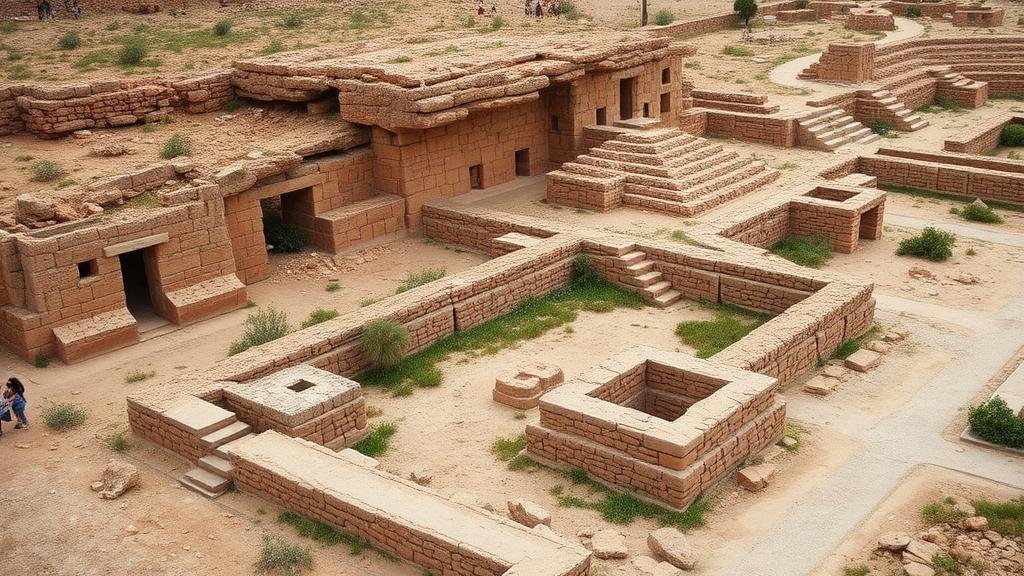How climate change impacts the visibility of archeological sites.
How Climate Change Impacts the Visibility of Archaeological Sites
Climate change has emerged as a pressing global crisis, affecting various facets of life, including archaeology. The visibility of archaeological sites impacted by a confluence of factors tied to altered environmental conditions. This article explores how climate change influences the preservation, visibility, and overall integrity of significant archaeological sites around the world.
The Mechanisms of Change: Erosion and Sedimentation
One of the primary ways climate change affects archaeological site visibility is through increased erosion and sedimentation. As global temperatures rise, weather patterns become more erratic, leading to heavier rainfall and more intense storms. These phenomena result in:
- Erosion: Flash floods and prolonged rainfall can wash away soil layers that cover and protect archaeological artifacts. For example, the archaeological sites of Caral in Peru, which date back to 3000 BCE, are increasingly at risk due to heavy rainfall patterns that heighten erosion.
- Sedimentation: In contrast to erosion, shifting sediment patterns can bury important archaeological sites. ancient city of Pompeii, buried by volcanic ash in 79 CE, serves as a reminder of how natural events can obscure historical relics, but climate change is exacerbating similar risks through flooding and sediment displacement.
Temperature Fluctuations and Material Degradation
Temperature fluctuations caused by climate change also contribute to the degradation of archaeological materials. High temperatures can lead to the deterioration of organic materials such as wood, textiles, and bone. Example sites include:
- Wadi Qadan, Syria: Over the last few decades, increased temperatures have led to the deterioration of organic artifacts, making the analysis of human activity at this important Neolithic site more challenging.
- Byzantine Churches, Turkey: Many ancient structures, such as the Hagia Sophia, face temperature-induced cracking, jeopardizing their structural stability and visibility.
Shifts in Vegetation and Landscape Dynamics
Climate change is also altering vegetation patterns, directly influencing archaeological visibility. Warmer temperatures and changing precipitation levels result in:
- Invasive Plant Species: Invasive species often thrive in changing climate conditions, obscuring archaeological features. For example, the ancient site of Cahokia, near modern-day St. Louis, has seen an increase in invasive plants that cover mounds once visible to archaeologists.
- Loss of Vegetation: On the other hand, droughts can lead to decreased vegetation cover, potentially exposing archaeological artifacts but also making them more susceptible to looting and vandalism.
Case Studies: The Impact of Climate Change on Notable Sites
Given the global nature of climate change, its effects on archaeological sites are evident in various locations:
- Great Zimbabwe, Zimbabwe: Altered rainfall patterns have contributed to the erosion of this UNESCO World Heritage site, which features stone ruins from the 11th century. Increased downpours have eroded the pathways and surrounding structures.
- The Arctic and Sub-Arctic Regions: Melting permafrost is revealing ancient artifacts and structures in places like the Bering Sea coastal regions. While this discovery provides valuable insights into past human behaviors, the rapid melting also threatens to degrade these sites rapidly.
The Role of Technology in Mitigating Risks
Fortunately, advancements in technology offer solutions to mitigate the risks posed by climate change. The utilization of remote sensing technologies, such as LiDAR (Light Detection and Ranging), allows archaeologists to visualize and document sites obscured by vegetation or erosion. For example, LiDAR technology has revealed hidden Mayan cities in Central America that were previously unknown due to dense forest coverage.
Also, Geographic Information Systems (GIS) can assist in monitoring changes in archaeological landscape visibility, helping to prioritize conservation efforts based on vulnerability assessments.
Actionable Takeaways for Preservation Efforts
The need for actionable policies and preservation strategies has never been more crucial. Key recommendations include:
- Collaboration: Encourage partnerships between archaeologists, governmental agencies, and community groups to address climate-related risks.
- Funding and Resources: Secure funding for excavation and conservation projects, especially in vulnerable areas influenced by climate change.
- Public Awareness: Raise awareness about the significance of archaeological preservation amidst climate change, engaging local communities in the preservation process.
To wrap up, climate change poses significant challenges for the visibility and integrity of archaeological sites worldwide. Understanding these impacts and taking proactive measures can ensure that future generations continue to benefit from the study of our shared human heritage.



